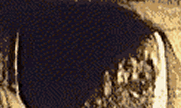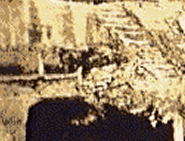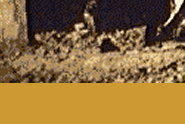You crawl into: The Ancient Caves Beneath the City Presiding Ghost, Mortimer |
"the
last letter of the |
||||||
|
The earliest reference to the caves in a Book is in the Oxford University translation of The Life of King Alfred (868 CE) by the monk, Asser. Here, Nottingham is referred to as ‘‘Tigguocabauc’’ which means Cavy House or House of Caves. The cave we are in, right off of Market Square, is one of 200 caves in the mass of Bunter Sandstone that forms the substrate of Nottingham. The constant temperature is ideal for making malt and beer, and so Ye Olde Trip to Jerusalem Pub was built around a malting cave. Though the caves were used for living, malting, fish gutting, prison, foundry, and all sorts of other things, they do not seem to have been used as a Library. But history is, no doubt, Interred in the sandy rock. Hummm.
About the Caves Debunking the spelunking. . . . Are the caves natural? Unlike the caves of Derbyshire, which were created by water action, all the caves beneath the city are man-made, cut from the solid Bunter Sandstone. Although, it is possible that when a natural fault in the rock face presented itself to a cave cutter/digger he would not have been slow to take advantage of it. Investigations into the tooling marks that cover the walls of caves show that the work may have been done with a small pick like tool, or a shaft. Are they drippy and creepy? Nottingham caves are not damp and the only place you may see dripping water is possibly where the hand of man has tried to improve on nature. Because of the nature of Bunter Sandstone, it's somewhat like a sponge, water will flow down through it and around caves.
|
Find another site. Create a Character
Return to the Great Hall |



 Ah,
we are here inside the Caves. It's a bit cold! But we shall press on. . .
.
Ah,
we are here inside the Caves. It's a bit cold! But we shall press on. . .
.






